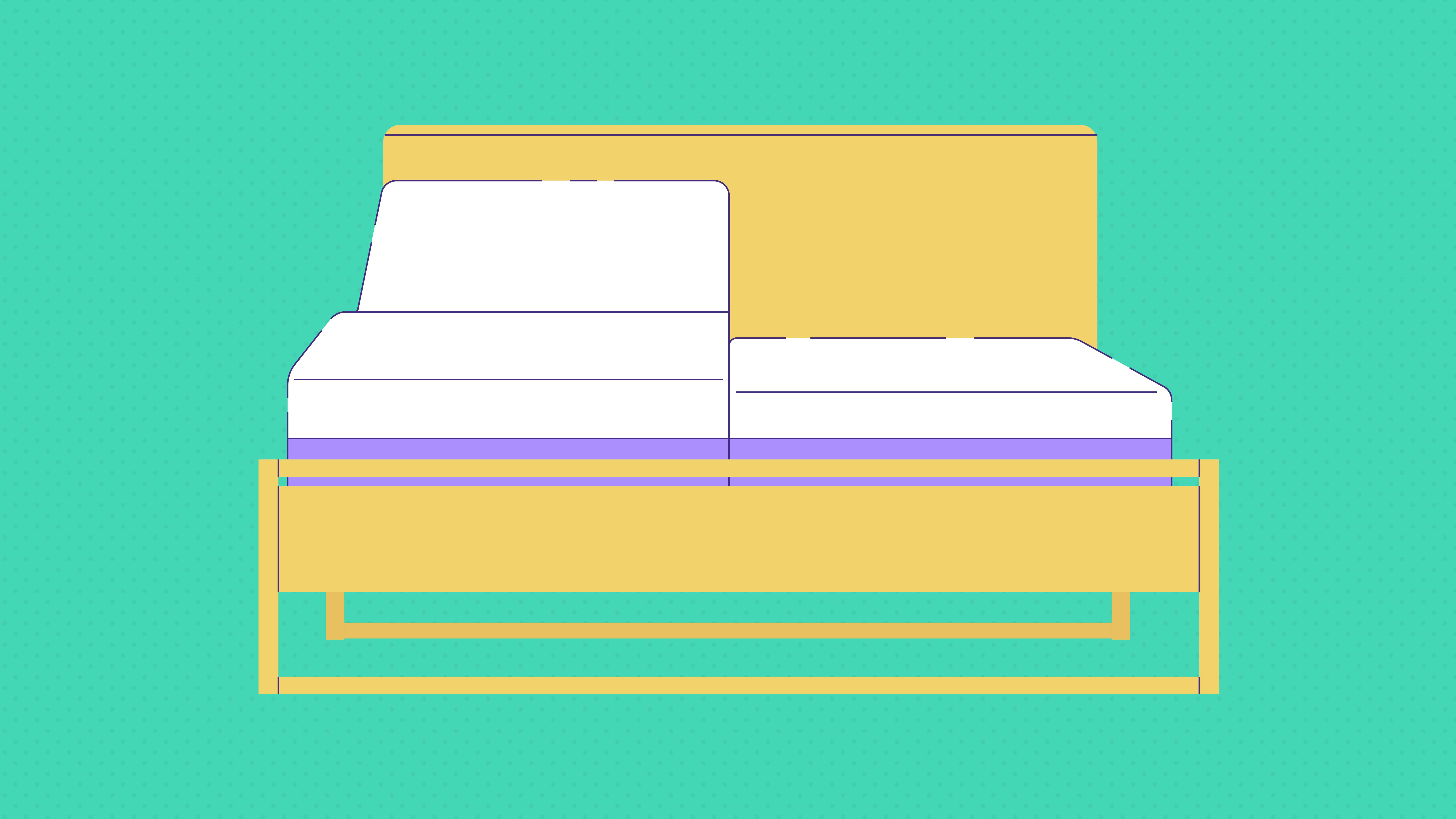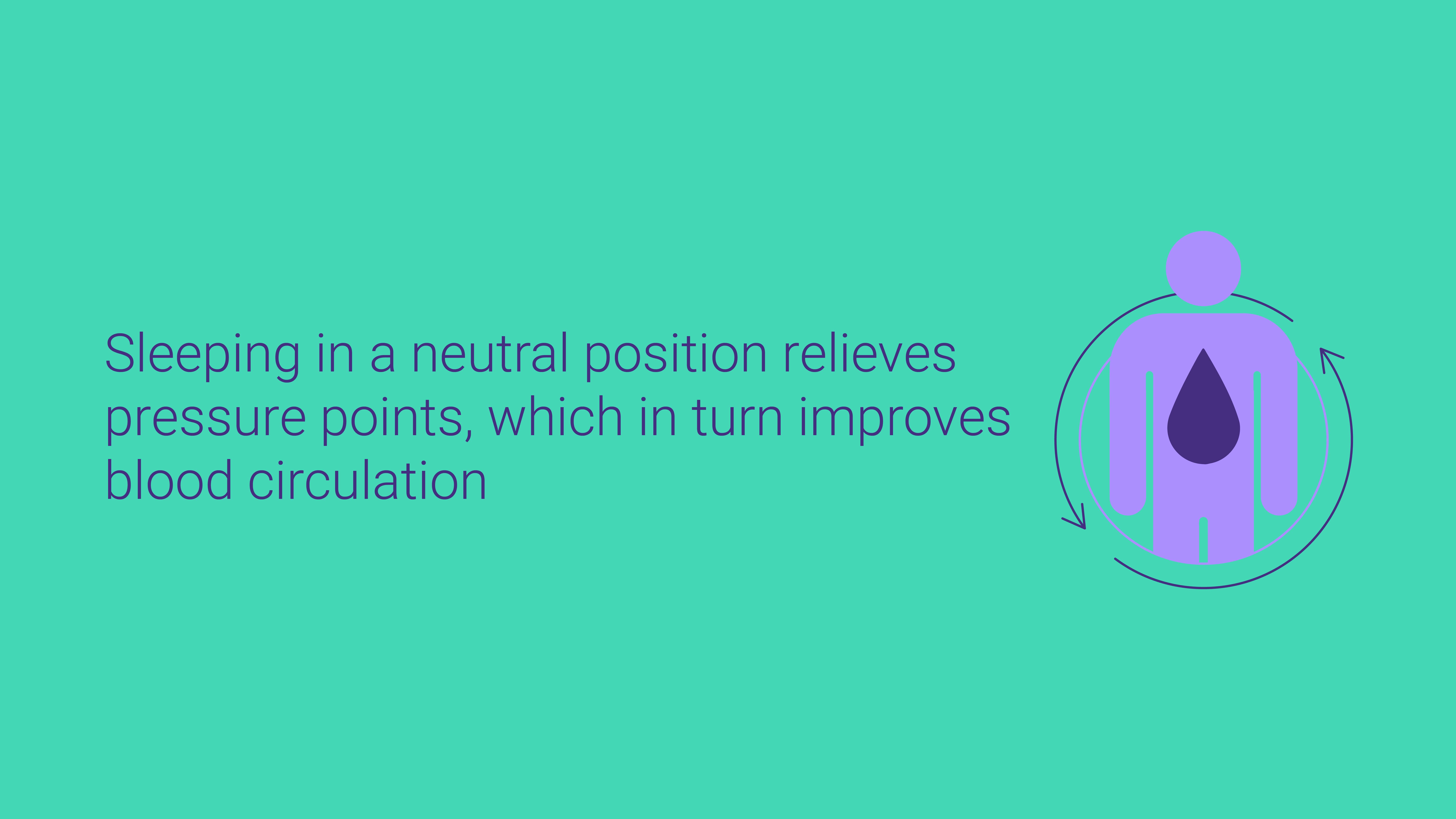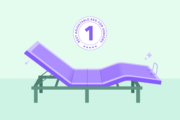
8 Benefits of an Adjustable Bed

- Adjustable beds offer various health benefits, such as reducing back pain and improving circulation.
- They help achieve the zero-gravity position, reducing pressure points and allowing for easier breathing and reduced snoring.
- The enhanced independence, minimized heartburn risk, and relief for conditions like arthritis and leg swelling are additional advantages of using adjustable beds.
Adjustable bed frames let you raise and lower the head and foot of your bed with the help of a remote control. We all sleep best when our body is in a healthy, pressure-free position and an adjustable bed makes doing this much easier. There are many benefits that come from having an adjustable bed—let’s take a closer look at 8 of them.
Reduced Back Pain
If you suffer from lower back pain, your sleep posture could be the cause. Sleeping with poor posture or on a completely flat mattress can make your spine twist and strain, placing pressure on your joints.
No matter your sleeping style, you should always try to keep your spine neutral, and an adjustable bed is perfect for just that. By elevating the legs during sleep, there is less pressure on the lower back, allowing the muscles to fully relax and recover.
Zero-Gravity Position
The zero-gravity position aligns your neck, spine, and hips, relieving pressure points. Adjustable beds help you achieve the zero-gravity position by elevating your head and legs.
Many adjustable beds have zero-gravity presets, which makes getting into this weightless position as easy as pressing a button. Others will let you save a custom preset, including the zero-gravity position.
Easier Breathing
Adjustable beds allow you to sleep at an incline to keep your airways clear and reducing the risk of snoring. Instead of trying to prop your head up with pillows, let an adjustable bed do the work for you. An adjustable bed can also improve your sleep quality if you have sleep apnea.
Sleep Apnea
Sleep apnea is a condition where your breathing stops and restarts throughout the night. Sleepers with this condition often wake regularly during the night, keeping them from entering deep sleep.
If you have this condition, an adjustable bed can improve your sleep quality by keeping your airways clear. Elevating your head keeps the loose tissues around the back of your throat away from your windpipe, opening your airways.
Snoring
Snoring happens when your tongue or the soft tissues around the back of your throat partially block your airways. When you take a breath through your partially blocked windpipe, the result is a vibrating sound—snoring. Elevating your head helps keep your airways clear, easing your breathing and reducing snoring.
Adjustable beds make finding the ideal elevation for your head easy—many even have an anti-snore feature. With this feature, your bed automatically elevates your head to a 7-degree angle when you start snoring.
Enhanced Circulation

Have you ever woken up with an arm or a leg “asleep” because you slept in a way that cut off circulation? This is usually a sign of poor sleep posture. Sleeping in a neutral position relieves pressure points, which in turn improves blood circulation.
With an adjustable bed, you can adjust your body in a way that encourages good circulation. Many adjustable beds also offer a relaxing feature that helps stimulate circulation: massage motors.
Full-Body Massage
Adjustable beds that include the massage feature are a great way to release tension, relax your muscles, and stimulate blood circulation. The massage motors are distributed on the surface of the adjustable frame, under your adjustable bed mattress. When turned on, they produce soothing vibrations to your lower and upper body.
Increased Independence
Many older sleepers are on bed rest and don’t have much mobility. Adjustable beds give them the freedom of adjusting their own position throughout the day; they also make it easier for sleepers with disabilities to get in and out of bed. This bed can provide convenience and comfort for those with a disability that makes moving around difficult.
Minimized Risk of Heartburn
Heartburn is the result of acid reflux, which happens when stomach acid enters your esophagus. Adjustable beds help you sleep with your head slightly elevated. In this position, gravity keeps stomach acid out of the esophagus, lessening heartburn risk.
Lessen Leg Swelling
Nighttime swelling is often the result of fluids gathering in your legs and feet (also known as “edema”). It’s common for pregnant women to experience this because they have extra fluid in their body that’s under pressure from their growing uterus.
Sleeping on a flat surface only aggravates edema. An adjustable bed elevates your legs, while keeping your knees slightly bent. This keeps the fluids from pooling and helps the swelling go down.
Relieve Arthritis
Adjustable frames help with arthritis because they take the pressure off your joints. Relieving pressure points can reduce the aches and inflammation that come from arthritis. With the pressure evenly distributed, your body is able to rest and rejuvenate during the night.
FAQs
Are adjustable beds good for side sleepers?
Adjustable beds are good for all sleep styles except stomach sleepers. If you sleep on your stomach, elevating the head and foot of your bed puts strain on your spine.
Adjustable beds are great for side sleepers since sleeping flat on your back often puts pressure on your neck and hips. With an adjustable, you can take away this pressure by elevating the head and foot of your bed.
Do you need special sheets for an adjustable bed?
You do need special fitted sheets for an adjustable bed. Standard fitted sheets slip off an adjustable frame as it goes up and down. Look for fitted sheets with extra deep pockets, sheet suspenders, or adjustable bed sheet fasteners. These all make sure your fitted sheet stays firmly on your adjustable bed.
How long do adjustable beds last?
This depends on the quality of the adjustable bed. On average, a high-quality adjustable bed lasts 7–10 years, a frame 10–15 years, and the motorized parts 5–10 years.
Does an adjustable base ruin your mattress?
This depends on the type of mattress you have. Mattresses compatible with adjustable bed frames will not become damaged when bent. We recommend using either a memory foam mattress or hybrid bed with your adjustable base. Innerspring mattresses are not flexible enough to bend with an adjustable frame, causing them to wear out quickly.
Can you sleep on your side in a zero-gravity position?
Side sleepers should sleep in a zero-gravity position. Zero-gravity means all your weight is evenly distributed throughout your entire body, so you don’t have any pressure points. A side sleeper’s zero-gravity position is different from that of a back sleeper, but it is still a healthy way to sleep.
Enjoy Versatile Comfort
Adjustable beds have a variety of health benefits and make it easy to find a healthy and comfortable sleeping position. They also add luxury to your time in bed. Whether it’s unwinding with a massage or sitting up comfortably with a good book, adjustable beds are versatile and easy to use. While rather expensive, an adjustable bed is often worth it because it can improve your comfort and sleep health. However, as you shop for an adjustable bed, be sure to keep your needs in mind. Only spend money on features that you plan to use and those that pertain to your specific issues.



